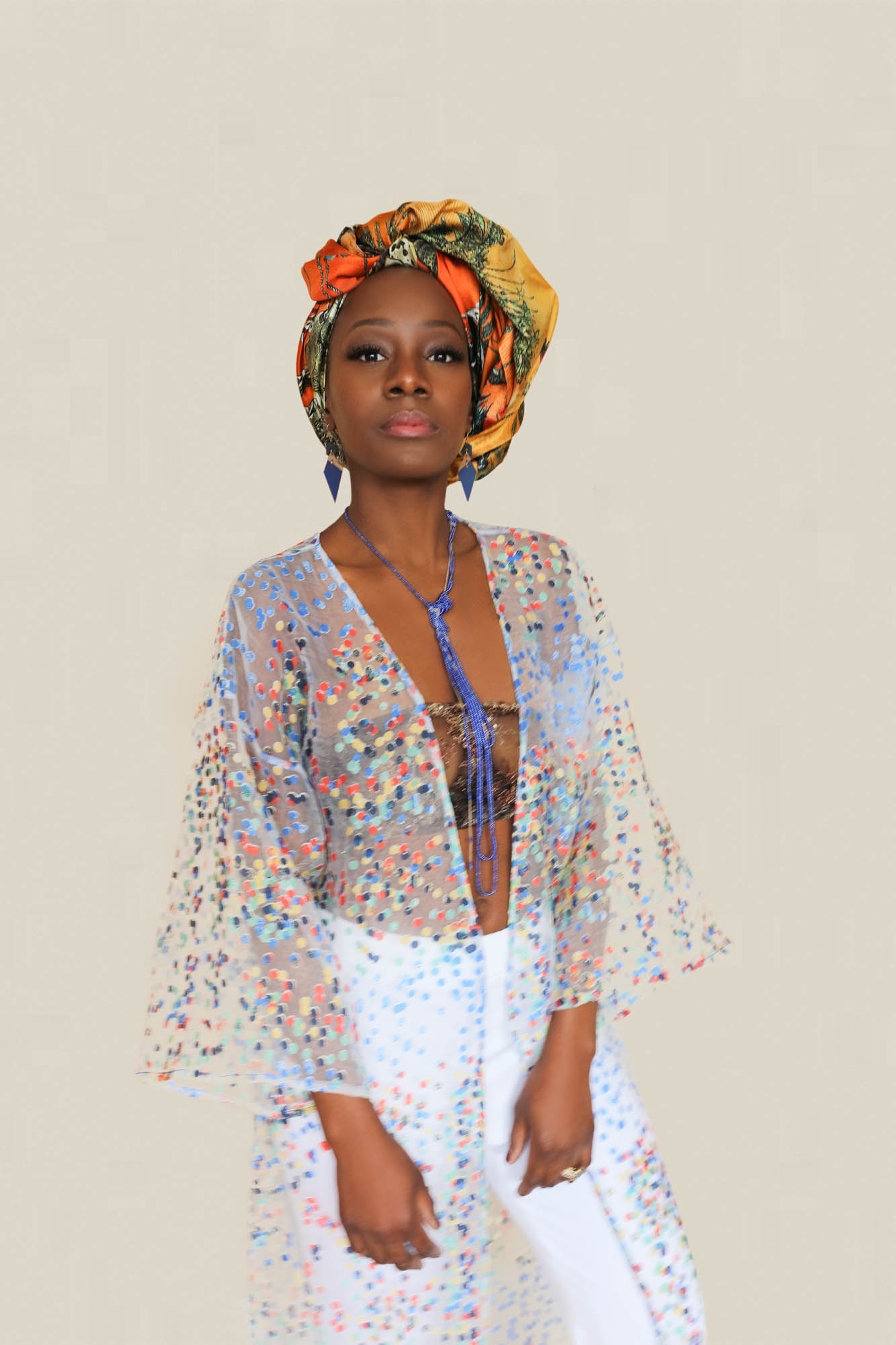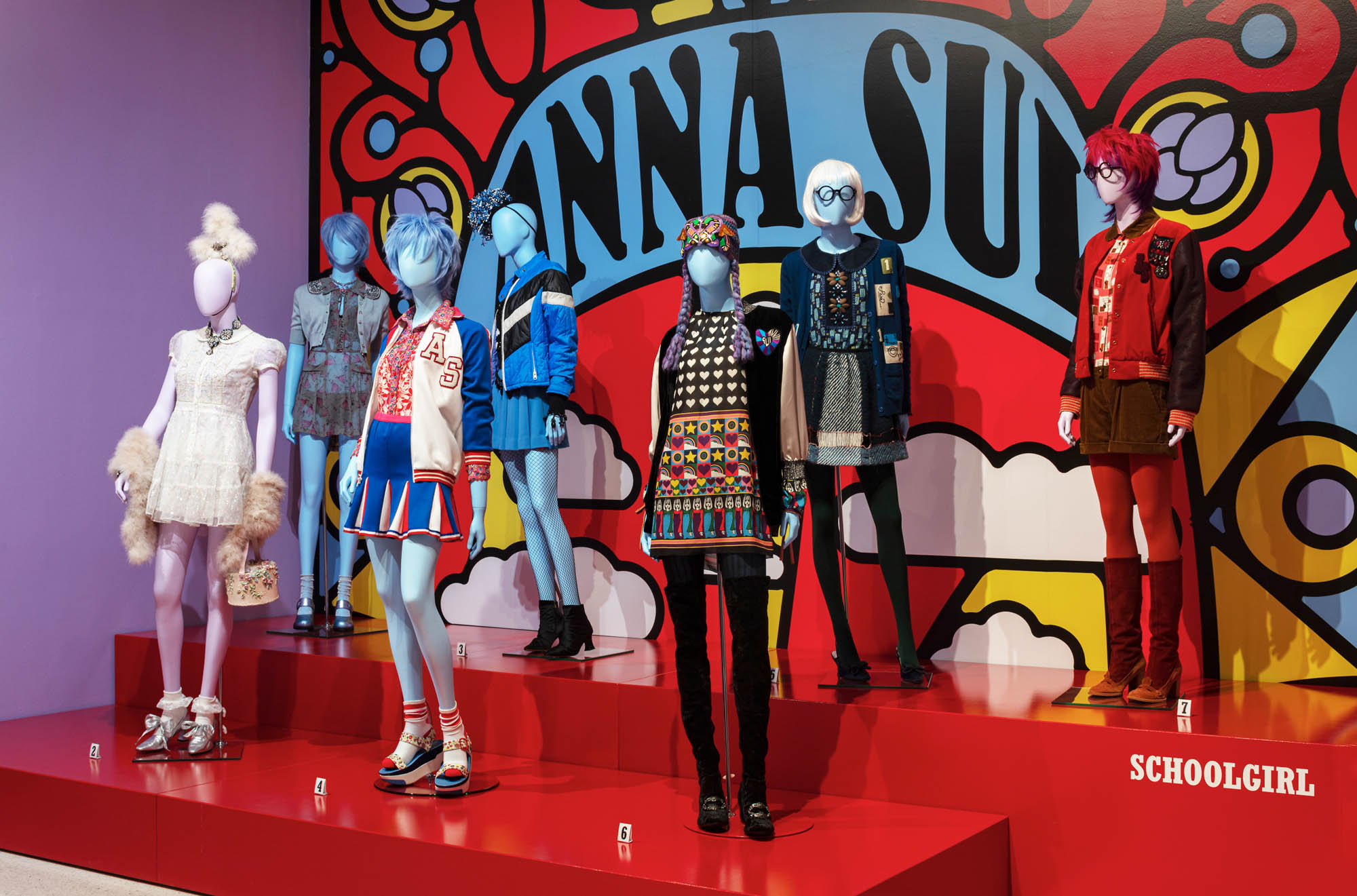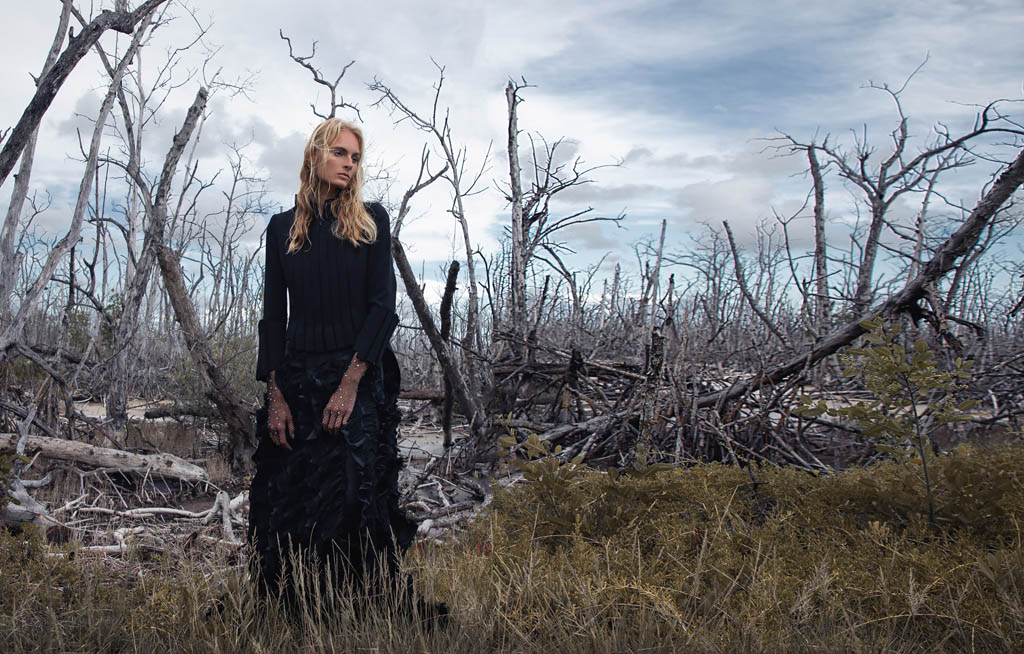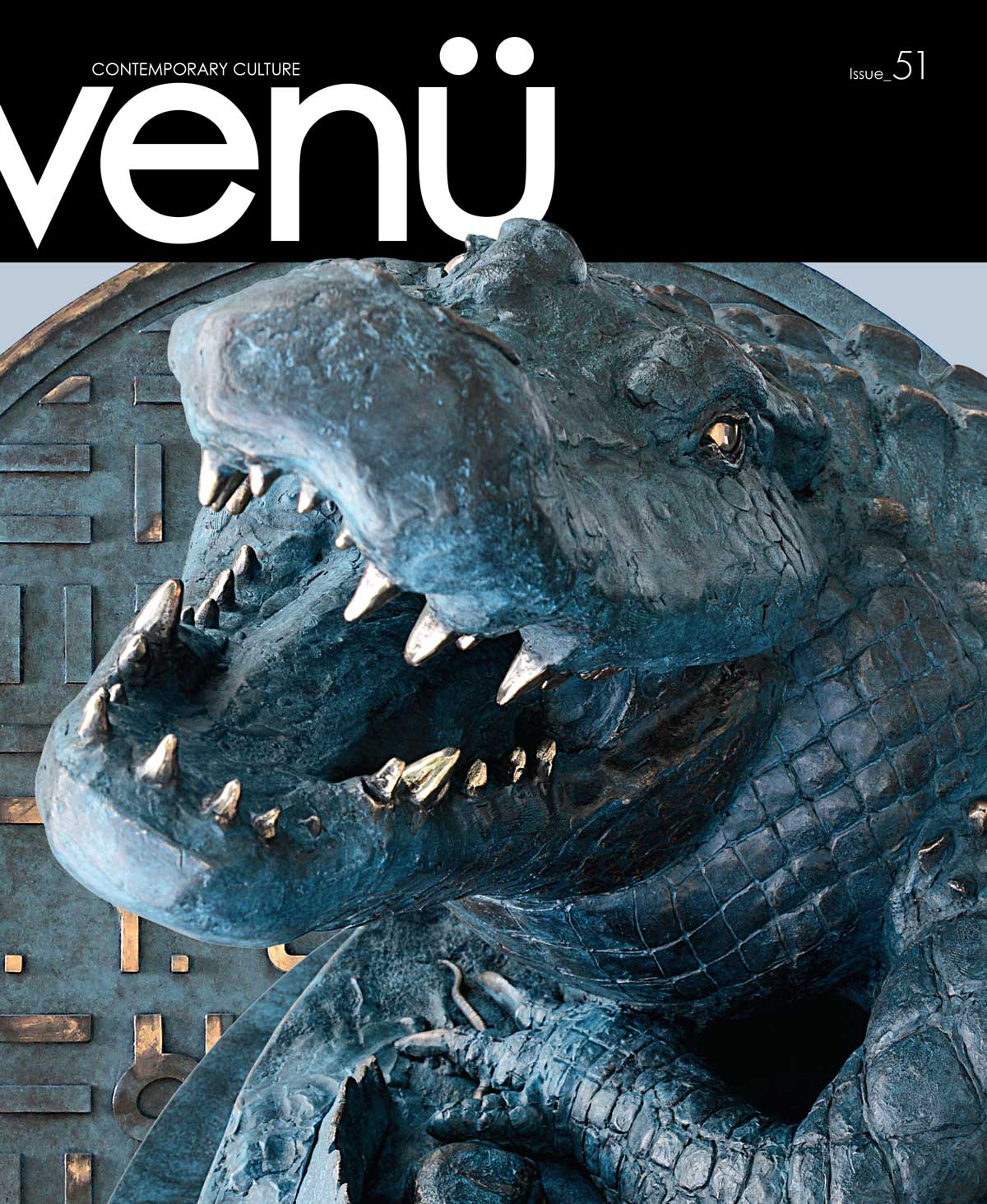
“I’m a British-born woman from Ghanaian parents and my sustainable fashion journey started when I was born. The zero-waste originator in my family, my mum, made loads of my outfits when I was smaller. Never a scrap of material was wasted. Upcycled. Handmade. Made With Love by Ghana.”
Entrepreneur, Cultural Sustainable Fashion Activist, Women’s Empowerment Advocate, Founder of THE TRIBE™, CEO of RCGD Global (home of Red Carpet Green Dress at the Oscars), speaker, presenter, producer, writer and coining the phrase “eco-ghosters” are just some of the few titles that we’re able to add to Samata’s curriculum vitae, but at the core of who she is and what she’s most proud of is her British – Ghanaian roots.
VENÜ meets up with Samata to discuss fashion metrics, redefining the future of sustainability, changing the landscape of fashion design, her passion NFT project, and her inherent mission.
VENÜ: What attracted you to fashion?
SAMATA: As I prefer to say, clothing connects us all because we all wear clothes every day – it’s an act we all participate in and is unifying. Maslow’s hierarchy of needs places clothing firmly on the essentials list when it comes to “universal human needs.” Clothing provides dignity, warmth, protection – and, for those able to see it, a way to express identity and communicate. Using fashion as a visual communicator has always fascinated me. My passion is connecting those dots for people about fashion’s role in sustainability and cultural context.
VENÜ: How did your passion project begin?
SAMATA: I have always believed that creativity is a master solution holder; if you think about it, we must design ways to extract ourselves from the climate crisis, waste colonialism, exploitative business structures and damaging stereotypes. This requires a deep level of creativity to frame critical topics in conscious and appealing ways. See climate change as a Future scope – Imagine living in a world where we are battling sweltering heat, intense food availability, and mass immigration swings. How do we live in that world? That question grounded me in the fact that cultural origin stories are significant to me. It inspired me to ideate a character that learns about herself and her role in building a more sustainable future through traditional symbols.
“My project is a story and series of NFTs to spotlight cultural sustainability through the lens of a creative West African diaspora young woman returning to her parents’ country to find her place in the world.”
I am priming meaning into the body of work that continues a dialogue about the interconnection between past and present worlds we live in that are never out of reach and far from our minds. My passion has always been to bridge the gap and help people see that they have always been part of this conversation. Sustainability is a concept that encompasses not just environment and social issues but also focuses on culture and knowledge as being crucial. My ethos is storytelling matters – a visual gateway to shifting attitudes within the industry to speak about solutions that restore biodiversity and create purpose and positive impact, for people and the planet.
VENÜ: In your opinion, what is the most crucial sustainability challenge we will face in virtual reality?
SAMATA: Ensuring that an engaged community of global citizens can remain connected with the living, breathing world we currently reside in. There’s already a disconnect with reality within our society where we have become desensitized by digitization. Every day, an immense amount of data gets generated (2.5 exabytes), which seamlessly buries us with information, and adding a virtual element to it can become numbing. The actual work begins with ethical and compassionate connectivity that engages others to care about sustaining the planet and global communities, especially as we are crafting other worlds around us that push real people further and further out of sight.
VENÜ: How are you measuring progress?
SAMATA: In the realm of sustainability within the fashion world, I think we have the tangible and the intangible metrics that are almost more important. The tangible ones are not as challenging to measure, like resource reduction, lower emissions, energy efficiency, and renewable energy resources. Preservation of culture, rights of ownership of indigenous knowledge, and perceptions of exploitation are more challenging metrics to come by but are immensely important.
With RCGD Global and Red Carpet Green Dress, we are working on an exciting project on social indicators that showcases the need to deliver metrics for the planet and the people. We have seen human suffering within the fashion industry for some time, and when COVID hit, the consequences of our actions became elevated. 72% of buyers refused to pay for raw materials already ordered and produced and paid for by the factories, 91% refused to pay for the making of the orders they had committed to, and 98.1% repudiated, contributing to the cost of paying partial wages to furloughed workers that the law requires. Progress can’t purely focus on reducing the carbon footprint and ignore that workers aren’t being paid and their fundamental rights to organize and protect their livelihoods are being stripped away. There’s much work to be done to balance things out.
VENÜ: In your opinion, what are the most significant ways to create social sustainability?
SAMATA: It will constantly shift from mindset to perception. If you cannot help people see things differently, any change will never be lasting; it will always be performative.
VENÜ: What does human luxury represent to you?
SAMATA: Luxury, to me, is always free of exploitation, as something cannot be refined and exquisite if it’s been created by the process of suppressive profiteering. I know there’s a saying that pleasure is pain or that pressure makes diamonds, but the stress of pouring a significant level of skill and expertise into something does not equate to suffering. Luxury is not purely limited to an expensive item too – it’s something preserved and cared for, something savored and appreciated as a treat. It isn’t limited to a specific group within society, even if that is a common perception! For me, luxury is 100% being redefined right now; it almost has moved away from old access and opulence to a new design that is efficient, highly evolved, and considered from conception through to the disposal and discards of a garment. We’re talking about quality and longevity, the opposite of something thrown away, but we’re also talking about the need for affluence to rewrite and tell a powerful story to justify its higher existence.
“Fashion, as a word, invokes a feeling of exclusion, hostility and inaccessibility.”
The other flip side of this question is that sustainable fashion from many different lenses is fashion that includes black creators and designers. The question then becomes, can black creators be part of the luxury conversation, and the answer for me is, of course. One of the most limited points of view is that luxury is only a conversation for a white audience or that BIPOC (Black, Indigenous, and people of color) communities are not involved in luxury. There are so many luxury BIPOC brands that should be getting our support.
VENÜ: What is the most profound disconnect between fashion and our natural surroundings?
SAMATA: I think there is initially this notion that fashion has nothing to do with the sustainability conversation, but that could not be more inaccurate. We are essentially living in the Anthropocene, a man-driven era of unprecedented change, where humans are overusing the Earth’s biocapacity, the regenerative ability of our planet’s ecosystems by over 50%. This is like living off 1.5 Earths. So, what role does fashion play in that? There’s a shortfall in understanding when it comes to apparel and textiles. We don’t connect our clothes with fields, farms, or forests, but that’s where our cotton, leather, and viscose come from. Even our synthetics like polyester are made from nonrenewable resources like oil. All the processes to make our clothes – extracting raw fibers, making materials, cutting and sewing garments, and shipping them, down to us wearing them all impact the planet and the people. By 2030 the global clothing and textile industry is expected to use 50% more water and produce 62% more waste than in 2015. The repercussions of mass clothing production and consumption have approximately doubled in the last fifteen years.
VENÜ: There’s practical evidence supporting the positive impacts of the human-nature connection and the research on biophilic and regenerative design. How do we apply this vision to creating ecological harmony and a thriving circular economy?
SAMATA: Nature has always provided the blueprint for a regenerative design model. Our arrogance is that we let our ignorance surpass our humanity as a species by not recognizing that we have to reciprocate what we borrow from nature. Biomimicry would have taught us that nothing in nature is wasted – it is restored, regenerated, or that nature is the mother of cradle to cradle. We are late to acknowledge the power of biobased materials – biodegradable packaging is simply an orange peel or shell to nature. As the saying goes, living systems have had 3.8 billion years of R&D, and as humans, we are latecomers but Anthropocene-makers.
On the circular economy point, if we aren’t discussing reducing production, there is no circularity; it is being used as an excuse for secondary revenue streams, so we can create harmony by coupling the tangible things people do with candid dialogue. For example, with clothing, we know that by extending the use of second-hand pieces, we can reduce our water and waste consumption in 9 months and eradicate our carbon footprint by 30%.
VENÜ: As we’re entering the virtual space, there is a much deeper need to ingrain healthier practices in the cycle of consumerism where protecting proprietary assets and data of consumers is an absolute necessity. How are you emoting this shift for responsible consumption and connectivity?
SAMATA: I firmly believe that we must divest in growth and invest in supply chain prosperity and decouple economic growth from natural resource extraction and waste creation, directly impacting biodiversity by choking soil and rivers and erasing habitats. It’s in these moments that we have to remember that GDP is not the only measurement of progress – we need to discuss the maintenance of culture, quality of the environment, equitable distribution of revenue across the value cycle, and representation of indigenous cultures and people of color in critical positions of impact. My passion has always been driven by these tenets.
VENÜ: What is your favorite piece of clothing and why?
SAMATA: My bag from Accra, with the Sankofa symbol on it. For my projects and my work, that message matters. I even had that symbol embroidered onto my gown for the Oscars this year! As a British-born Ghanaian on a journey of self-discovery, this proverb felt like the perfect symbol to spotlight, which means “return and get it,” an emblem of the importance of learning from the past. Sankofa is a Ghanaian Akansha African symbol system, one of eight that Africans used to communicate with one another. “Look to the past to enlighten the future,” it means. Sankofa is a bird that looks to be flying forward while looking back. It implies that the past is incorporated into the future. Go back and get it. A symbol of the wisdom of learning from the past to build for the future. From the Akan proverb, “Se wo were fi na wosan kofa a yenkyiri,” meaning, “It is not taboo to go back for what you forgot (or left behind).” ☐
“Your own lens on sustainability is crucial if you want to have a meaningful relationship with it.”
– Samata
www.rcgdglobal.com | www.samatahome.com
Images courtesy of RCGD Global





Leave a Reply